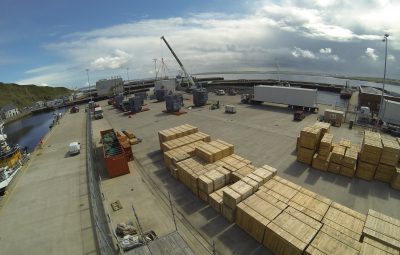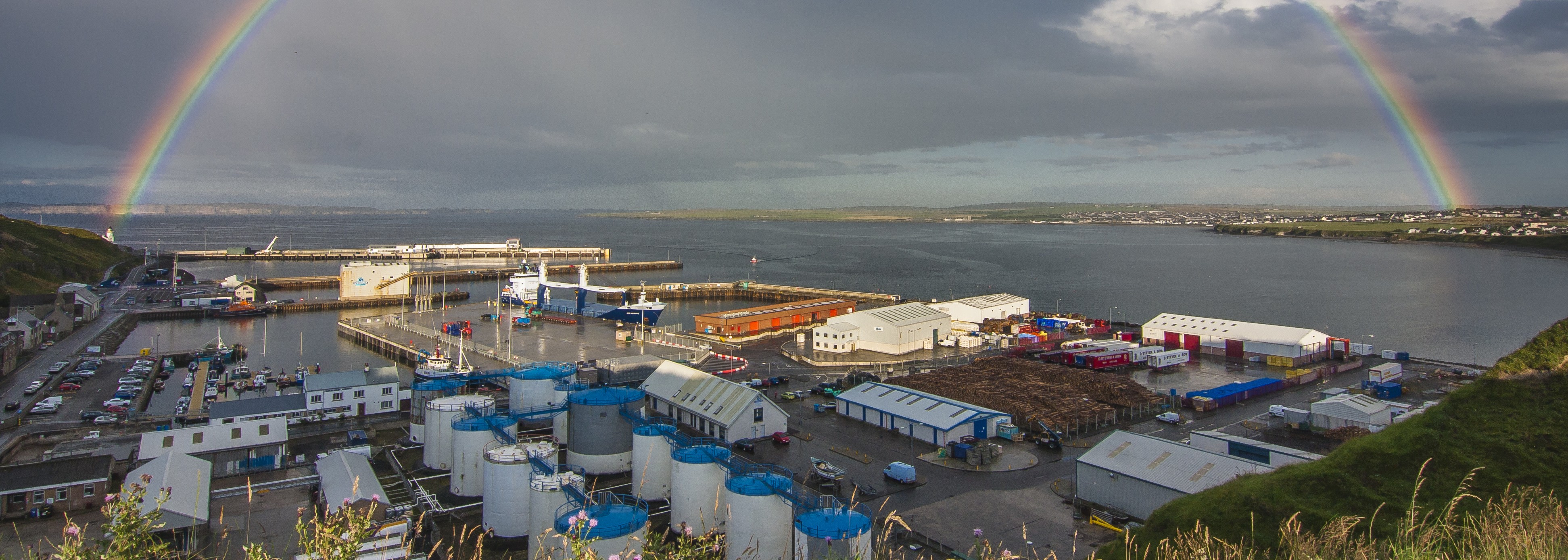 Jan
31
2017
Jan
31
2017
Scotland’s most northerly mainland commercial port, Scrabster Harbour Trust enjoyed continued strong success in 2016 bringing in more than £2.95 million in revenues from increased port activity.
Throughout 2016, Scrabster saw more than 2248 vessel arrivals, up 1.5 from last year. Due to increased activity across its traditional and target growth sectors, total vessel tonnage reached 8.457 million tonnes – an increase of 2.4%. Non ferry and vessel related vessel tonnage which exceeded one million tonnes for the first time in 2015, grew a further 20% to over 1.2 million tonnes in 2016.
Passenger numbers on the roll on / roll off ferry service between Scrabster and Stromness grew by 8% to 135,143 with the number of visiting cruise passengers totalling 5,096, up 63% compared to the 2015 season.
Scrabster continues to be a major fish and seafood landing port. A total of 308,016 boxes of fish were landed in the calendar year, an increase of 17%.
Increased support of installations West of Shetland saw Oil & Gas vessel tonnage and cargo volumes grow by 14% and 49% respectively in 2016. Scrabster also supported a number of energy related project activities involving heavy and large equipment. This ranged from supporting the deployment of 24 locally manufactured two hundred tonne blocks for MeyGen’s tidal energy site in the Pentland Firth, trenching trials for the Caithness Moray HVDC project, the load out of modules destined for Eon’s Rampion wind farm and the importation of transformers for SSE’s upgrading of the electricity transmission system.
The recent project activity has been captured by time lapse video by local firm Navertech. This, together with drone footage, can be viewed below.
Fish cargo imports and tanker deliveries all increased in the year.
Sandy Mackie, Port Manager commented “The figures for the calendar year are further confirmation that our vision and past investment is reaping benefits for the port and the local area. Since the creation of the Jubilee Quay, we have delivered record revenues in the past two financial years, and are on track to for a further record in 2016-17. Our drive to diversify the sectors using the harbour is resulting in increased activity and utilisation of the enhanced facilities and port capacity. It is particularly encouraging to have seen growth across our traditional sectors such as ferries and fishing as well as growth in energy related traffic”.
Future investment plans include a new ice plant to serve the needs of the fishing sector. A new 30 tonne production capacity plant is expected to be available during the summer of 2017. Studies and feasibility work is underway on works to redevelopment of the existing St Ola quay.
Be sure to change the video settings within the player to the highest quality and expand to full view to get the best out of these videos.



